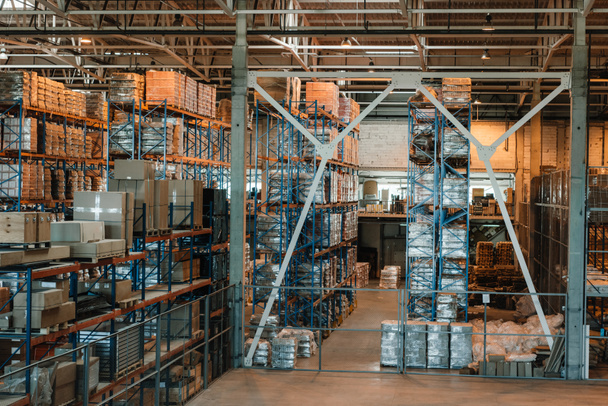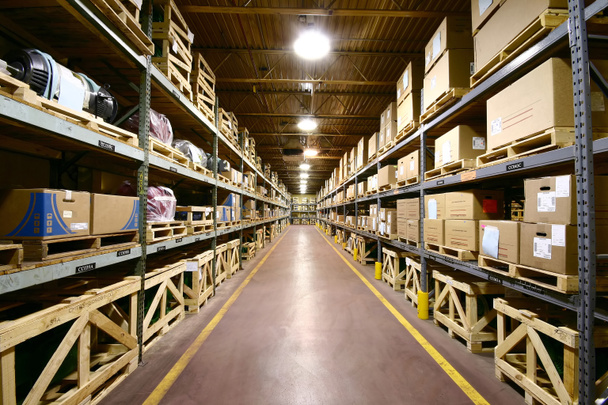Are you curious about the most common warehouse storage systems? Look no further! In this article, we’ll explore the top choices for maximising storage space in warehouses.
From pallet racking to mezzanine systems, shelving units to automated storage and retrieval systems (AS/RS), and wire decking, we’ll provide you with a comprehensive overview of these essential storage solutions.
Get ready to optimise your warehouse storage with these tried-and-true options! Visit Unirack to learn more about warehouse storage systems.
Key Takeaways
- Pallet racking and mezzanine systems are versatile and efficient storage solutions that maximise vertical space, improve inventory management, and reduce picking time.
- Shelving units, such as static shelving, mobile shelving, and wire shelving, offer versatile storage options for efficient organisation of small to large-sized items.
- Automated Storage and Retrieval Systems (AS/RS) minimise manual handling, reduce errors, and improve inventory management by utilising computer-controlled mechanisms.
- Wire decking complements the functionality of AS/RS by enhancing safety, providing stability, and offering compatibility with various pallets for different warehouse applications.
Pallet Racking

Do you know how pallet racking can optimise your warehouse storage space?
Pallet racking is a versatile and efficient storage system that maximises your warehouse’s vertical space. It consists of horizontal beams, upright frames, and wire decking, creating a sturdy structure to store palletised goods.
With pallet racking, you can easily organise and access your inventory, improving inventory management and reducing picking time. The system allows for the utilisation of forklifts, making it easier to load and unload pallets.
Pallet racking can be customised to meet your specific needs, with options such as selective racking, double-deep racking, and drive-in racking. This system not only optimises your storage space but also enhances safety and facilitates inventory tracking, ultimately increasing your warehouse’s efficiency.
Mezzanine Systems
To optimise your warehouse storage space, consider implementing mezzanine systems.
Mezzanine systems are elevated platforms that can be installed within your warehouse to create additional storage areas without expanding the footprint of the building. These platforms are supported by columns and can be customised to fit your specific needs.
Mezzanine systems are commonly used to maximise vertical space and can be designed to accommodate various load capacities. They’re versatile and can be used for storing a wide range of items, from small parts to large equipment.
With mezzanine systems, you can effectively utilise the unused vertical space in your warehouse and increase your storage capacity, ultimately improving operational efficiency.
Shelving Units
When organising your warehouse storage, consider utilising shelving units to efficiently store and access items. Shelving units are a versatile storage solution that can be customised to meet your specific needs.
Here are three types of shelving units commonly used in warehouses:
- Static shelving: This type of shelving is ideal for storing small to medium-sized items that don’t require frequent access. It’s sturdy and can support heavy loads, making it suitable for storing bulkier items.
- Mobile shelving: If you have limited space in your warehouse, mobile shelving units are a great option. These units are mounted on tracks and can be moved laterally to create an aisle for access. They maximise space utilisation while still providing easy access to stored items.
- Wire shelving: Wire shelving units are lightweight and allow for excellent visibility and airflow. They’re commonly used for storing items that require ventilation, such as food products or electronics.
Consider implementing these shelving units in your warehouse to optimise storage space and improve efficiency.
Automated Storage and Retrieval Systems (AS/RS)
As you continue organising your warehouse storage, consider implementing Automated Storage and Retrieval Systems (AS/RS) to further streamline your operations. AS/RS is a sophisticated warehouse storage system that uses computer-controlled mechanisms to automatically store and retrieve products. It minimises manual handling and reduces the risk of errors, ensuring efficient and accurate inventory management.
AS/RS typically consists of a combination of automated storage racks, robotic shuttles, and computer software. The system can handle a high volume of products and enables fast and precise retrieval of items, maximising productivity and reducing labour costs.
With AS/RS, products are stored in designated locations within the system, which are easily accessible by the robotic shuttles. These shuttles navigate through the storage racks, retrieve products, and deliver them to the designated pick-up points. The system can also incorporate various picking strategies, such as batch picking and zone picking, to further optimise efficiency.
Implementing AS/RS in your warehouse can significantly improve inventory management, reduce errors, and increase productivity. It’s a valuable investment for businesses looking to maximise efficiency and streamline their operations.
Wire Decking
Wire decking is another commonly used storage system in warehouses, which complements the functionality of Automated Storage and Retrieval Systems (AS/RS). It consists of wire mesh panels that are placed on pallet racking beams to provide a stable platform for storing goods.
Here are three key advantages of using wire decking:
- Enhanced safety: The wire mesh design allows for better visibility and ventilation, reducing the risk of fire and ensuring the safety of personnel and stored items.
- Increased stability: The wire mesh panels prevent pallets from falling through the racking beams, providing a secure surface for storing goods and preventing damage.
- Improved versatility: Wire decking is compatible with various types of pallets and can accommodate different load sizes and weights, making it suitable for a wide range of warehouse applications.
Frequently Asked Questions
How Does the Cost of Pallet Racking Compare to Other Warehouse Storage Systems?
The cost of pallet racking may vary compared to other warehouse storage systems. Factors such as size, material, and complexity contribute to cost differences. It is advisable to consult with suppliers for accurate pricing information.
Are There Any Weight Limitations for Mezzanine Systems?
There are weight limitations for mezzanine systems. The maximum weight that can be safely supported depends on several factors, such as the design of the mezzanine and the load-bearing capacity of the floor.
Can Shelving Units Be Easily Adjusted to Accommodate Different Product Sizes?
Shelving units can be easily adjusted to accommodate different product sizes. You can simply move the shelves or add/rem
What Are the Main Advantages of Using Automated Storage and Retrieval Systems (As/Rs)?
The main advantages of using automated storage and retrieval systems (AS/RS) are increased efficiency, reduced labour costs, and improved inventory accuracy. AS/RS systems utilise technology to automate storage and retrieval processes, leading to faster operations and improved overall warehouse performance.
Is Wire Decking Compatible With All Types of Pallet Racking Systems?
Wire decking is not compatible with all types of pallet racking systems. It is commonly used with selective pallet racking, but may not be suitable for other types such as drive-in or push-back racking.
